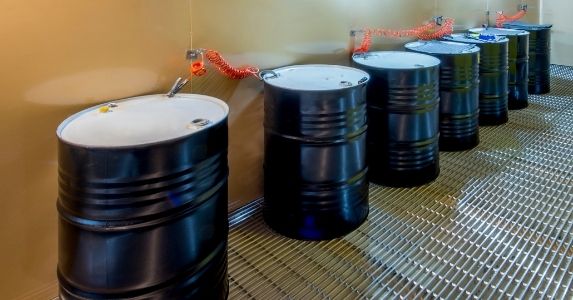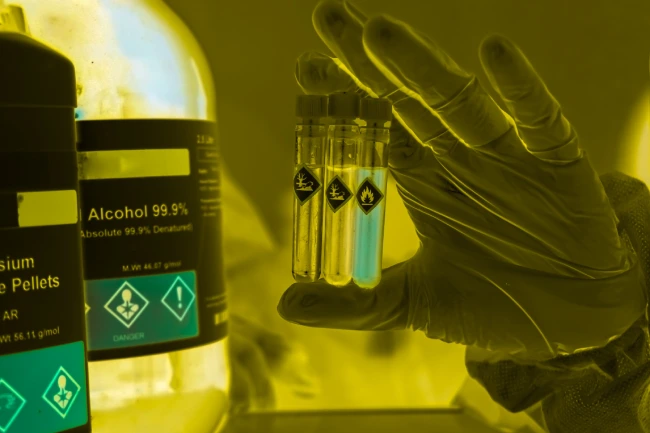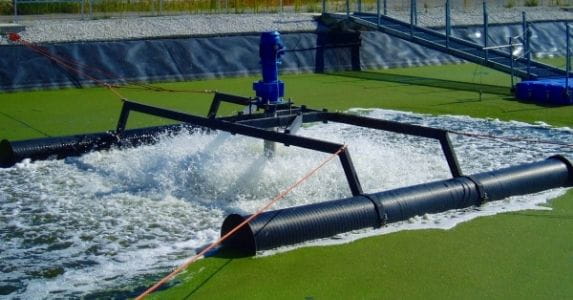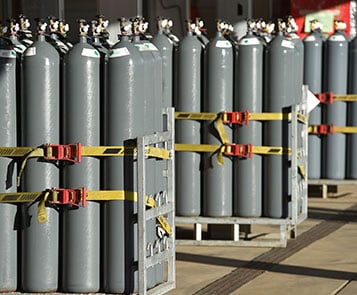Biennial Hazardous Waste Report: Full Compliance Guide
The Biennial Hazardous Waste Report is simply one of many regulatory reports required by the Environmental Protection Agency (EPA). The purpose of this report is to ensure compliance by the regulated community and to provide the public with a report on information regarding the generation and disposal of hazardous waste.
What Is the Biennial Hazardous Waste Report?
The Biennial Hazardous Waste Report (often called simply the “Biennial Report”) is required by the EPA under the Resource Conservation and Recovery Act (RCRA); by March 1 of every even-numbered year (2026, 2028, 2030, etc.) Large Quantity Generators (LQGs) must report on their previous year’s hazardous waste operations using EPA form 8700-13/AB, which is now available electronically on the EPA website. This includes the nature, quantities, and disposition of hazardous waste generated at their facility.
Federal regulations dictate this biannual reporting period, but 21 state authorities require an annual reporting period instead. States held to this annual hazardous waste report requirement will submit a Biennial RCRA Hazardous Waste Report during even-numbered years and an Annual Hazardous Waste Report in odd years, often using the same form.
Definition and Purpose of the Biennial Hazardous Waste Report
The Biennial Hazardous Waste Report is filed every two years, detailing an LQG's hazardous waste operations.
Why does the Biennial Hazardous Waste Report matter?
This report helps organizations maintain legal protections and provide the government and local communities with access to chemical and hazardous waste information that keeps them safe. It also helps support EPA data and waste minimization and source reduction goals.
What are the penalties for noncompliance?
If your facility is noncompliant with Hazardous Waste Reporting guidelines, you may be susceptible to enforcement actions from both the EPA as well as any relevant state regulators. EPA fines alone can amount to $71,545 per violation, per day. Fines, legal liability, and reputational risks can occur for noncompliant facilities.
Difference Between the Biennial Report and Other Hazardous Waste Reports
The Emergency Planning and Community Right-to-Know Act (EPCRA), which falls under the RCRA umbrella, requires many different reports to maintain safety and compliance. These include:
- Biennial Hazardous Waste Reports, which outline hazardous waste operation activities
- Annual Hazardous Waste Reports, which use the same form as and for all intents and purposes are the same as Biennial RCRA Hazardous Waste Reports, but are required in odd-numbered years.
- Tier II Reports, in which organizations must report if they’ve stored above a threshold of certain chemicals within the past year
- TRI Reports, which outline the release of toxic chemicals and pollution prevention techniques
Who Needs to File the Biennial Hazardous Waste Report?
As a general rule of thumb, all LQGs need to file a Biennial Hazardous Waste Report. Some Treatment, Storage, and Disposal Facilities (TSDFs) may also need to file.
Specifically, if any of the following requirements are met, your organization is required to submit a RCRA Biennial Report:
- The site generated and disposed of, in any single calendar month, 1,000 kg (2,200 lbs.) or more of RCRA hazardous waste; or
- The site generated and disposed of, in any single calendar month, or accumulated at any time, more than 1 kg (2.2 lbs.) of RCRA acute hazardous waste; or
- The site generated, in any single calendar month, or accumulated at any time, more than 100 kg (220 lbs.) of spill clean-up material contaminated with RCRA acute hazardous waste, if classified as a very small quantity generator.
Common Exemptions and Misconceptions About Biennial Hazardous Waste Reports
There are a few common exemptions and misconceptions when it comes to Biennial Reports:
- Often, Small Quantity Generators (SQGs) and Very Small Quantity Generators (VSQGs) are exempt from filing Biennial Hazardous Waste Reports
- Certain facilities may generate hazardous waste and become LQGs temporarily (such as for a cleanout or lab renovation). Even though the designation is temporary, the organization will still need to file a Biennial Report for the relevant year.
- While related and similar, Tier II reporting and Biennial RCRA Hazardous Waste Reports are not the same. If an organization that needs to report to both only reports to one, there may be compliance penalties.
- Contractors cannot file on behalf of generators; the generator itself must file a Biennial Report as needed.
When Is the Biennial Hazardous Waste Report Due?
Biennial Hazardous Waste Reports are due on March 1 of every even-numbered year. 2026 is a reporting year, as is 2028, 2030, etc. Reports outline hazardous waste activities for the previous two years.
Federal vs. State Reporting Deadlines
If an organization operates in a state that requires annual reporting, these reports are due on March 1 of odd-numbered years (2027, 2029, etc.). Biennial Reports are often still required for these organizations by March 1 of even-numbered years, as aligned with the federal guidance. The EPA’s Hazardous Waste Information Platform (HWIP) can provide further deadline information.
Which states require Annual Hazardous Waste Reports, and which require Biennial Hazardous Waste Reports?
In the graphic below, states in blue require annual hazardous waste reports. This includes:
Arizona, Arkansas, California, Delaware, Idaho, Illinois, Indiana, Kentucky, Louisiana, Maine, Minnesota, Mississippi, Missouri, Montana, New York, Oregon, Tennessee, Texas, Washington, and Wisconsin.The states and territories in green do not require annual reports:
Alabama, Alaska, Colorado, Connecticut, Delaware, Florida, Georgia, Guam, Hawaii, Iowa, Kansas, Maryland, Massachusetts, Michigan, Nebraska, Nevada, New Jersey, New Mexico, North Carolina, North Dakota, Ohio, Oklahoma, Pennsylvania, Puerto Rico, Rhode Island, South Carolina, South Dakota, US Virgin Islands, Utah, Vermont, Virginia, West Virginia, and Wyoming.

Biennial Hazardous Waste Report Requirements
To file your Biennial RCRA Hazardous Waste Report, you will need the following information:
- Facility and waste generator information
- Hazardous waste codes and descriptions relevant to your facility
- Shipment and manifest data, including e-manifests
- Waste minimization and source reduction details
How to File the Biennial Hazardous Waste Report
There are a few steps to fully and completely filing a Biennial RCRA Hazardous Waste Report.
Step-by-Step Filing Process
- Review your hazardous waste profiles: As you begin the process to report, ensure you review the hazardous waste profiles for your organization. Make sure all profiles are still active, and that no new profiles have been added. Has anything been changed regarding the way waste is generated? Are all techniques of treatment and disposal the same? Has anything been added or removed from your chemical inventory? As part of this step, update your RCRA waste, source, form, and management codes. This will not only make preparing your Biennial Report easier, but will also help your waste program stay compliant.
- Gather data and materials: Gather your chemical inventory, waste profiles, and other documentation to help during filing.
- File your report using RCRAInfo: Log into RCRAInfo with your facility’s specific EPA ID and file your report in the correct spot, using your facility data.
Tips for Filing Success
There are a few things you can do to streamline reporting and prepare for the Biennial Hazardous Waste Reporting Year-Round:
- Ensure you have a workable and accurate chemical inventory. Before the reporting process even begins, you should ensure your facility has an accurate, workable, and auto-updating chemical inventory management If you do not, put one into place right away. If you have a chemical inventory already in place, make sure it is maintained up to the minute. Chemical inventories help immensely when gathering the data needed to report. An accurate chemical inventory can also help you track your generator status throughout the year and thus help determine if reporting is necessary.
- Consider waste minimization. Is it possible to lessen the volume or toxicity of your waste? Is there any waste that can be recycled or repurposed? On the Biennial Report, you will be asked to report on any waste minimization and source reduction activities you partake in.
- Track your generator status. Throughout the year, make sure to keep track of your generator status. Keep in mind that generator status is determined by the amount of hazardous waste produced AND shipped offsite each month; tracking the quantity sent out on a manifest isn't enough. Be aware of activities that might cause you to surpass your status, such as lab cleanouts or moves. Also, pay close attention to any P-Listed materials that are ordered. Even if you just dispose of 1 kilogram of P-Listed waste in a month, you will be classified as an LQG. Exemptions reports do apply per state and federal guidelines, but you will still be required to file a Biennial Hazardous Waste Report.
- Familiarize yourself with using the EPA’s RCRAInfo. This includes ensuring you know your EPA ID, have access to the system via an account, and know how to access and manage data within the system.
- Know that your state may utilize different filing systems or have different reporting requirements. Contact us for state-specific Biennial Hazardous Waste Report and EHS compliance reporting information if you are unsure.
- Train Employees on the reporting requirements. RCRA training is typically required about once a year for employees who have RCRA-related responsibilities. Ensure your employees stay up to date with RCRA training so Biennial Hazardous Waste Reporting is more streamlined.
- Conduct EHS compliance audits. An internal EHS audit can help ensure you have everything that you need for compliance firmly in place, long before you need to file.
- Leverage EHS consulting and technology. If you need assistance preparing to file or setting your facility up for success, don't be afraid to ask for help. Biennial Hazardous Waste Report requirements, and RCRA requirements in general, can be quite complex—experts can help align your compliance requirements to your goals.
Common Challenges with Biennial Reporting
There are some common challenges that arise again and again with Biennial Hazardous Waste Reporting, including:
- Data accuracy and tracking issues: Without a proper chemical inventory management solution in place, data may be inaccurate. This may result in facilities reporting that don’t need to, or a lack of reporting from facilities that do, in fact, need to report.
- Waste misclassification: If waste is not properly identified and classified, reports can be skewed and inaccurate. A cloud-based chemical inventory management solution will help with this as well, ensuring all waste is accurately classified within the data.
- Training and staff knowledge gaps: Poor or no RCRA training sets employees up for failure. Without a full view of the RCRA requirements, employees simply cannot do their jobs properly—including reporting.
Biennial Hazardous Waste Report FAQs
Tier II reporting requires filing if organizations store above certain thresholds of specific chemicals; Biennial Reports must be submitted by all LQGs regardless of the type or quantity of waste generated.
How Triumvirate Environmental Can Help
No matter what support you need when planning for reporting or actually filing, Triumvirate Environmental is here to help. We offer:
- RCRA training services to keep your teams informed and your facilities compliant
- EHS compliance reporting support as you go to file
- Chemical inventory management solutions for cloud-based, auto-updating, accurate, and accessible chemical inventory data
- EHS audit support so you know where your compliance gaps are—and can work to fix them
It is crucial that you stay ahead of compliance—reporting accurately, on time, and completely. Need support? Request help from the team at Triumvirate Environmental.







